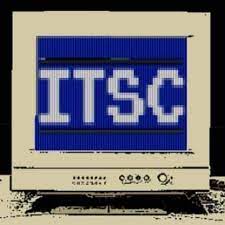Compliance Frameworks and LCNC Security Implications
LCNC technology for medical devices allows healthcare organizations to boost HIPAA compliance with the same safeguards as traditional coding, explains Oracle’s Uliyar. These include end-to-end encryption, audit trails and policy enforcement.
“They also rely on standards like FHIR and SMART [Substitutable Medical Applications, Reusable Technologies] on FHIR, which make apps portable, governable and easier to audit,” Uliyar says. “This allows organizations to innovate rapidly while still being able to address HIPAA, General Data Protection Regulation and regional compliance requirements.”
When building LCNC applications, organizations should perform shadow testing and operate “human-in-the-loop checkpoints,” Uliyar advises. He also recommends phased rollouts and continuous monitoring.
Microsoft’s Power Platform, which enables LCNC work, incorporates security features such as data encryption, role-based access and HIPAA-compliant infrastructure, Harper says.
“HIPAA requires granular user access, and LCNC platforms deliver this through role-based access control, multifactor authentication and privileged-access models,” Purushothaman says. “Automated workflows manage permissions dynamically, reducing the risk of unauthorized access.”
He adds, “With encryption, strong access controls, continuous monitoring and audit readiness, LCNC platforms can meet, and often exceed, the security standards healthcare providers require for PHI protection.”
LCNC Implementation Roadmap for Healthcare
Compared with a traditional EHR custom workflow that can take six to 12 months to deliver, LCNC development is faster, at four to eight weeks, Uliyar explains. Standards-based connectors, reusable components and visual flows could allow healthcare organizations to move from idea to pilot in four to eight weeks, he says.
The steps of low-code or no-code implementation begin with governance, according to Harper. That includes setting up data loss prevention policies and access controls as well as securing leadership buy-in. This stage can also include establishing a center of excellence to guide rollout and support internal app creators, he adds, noting how Texas Children’s Hospital used a CoE model to onboard new developers and guarantee quality and security for its Power Apps.
Organizations should then participate in a high-impact pilot, Harper advises; for example, digitizing a paper intake form or automating an HR workflow.
“This phased approach enables healthcare organizations to innovate safely while maintaining control and compliance,” he says.
ROI Analysis: Development Speed vs. Security Investment
When implementing LCNC tools, healthcare organizations should conduct a robust ROI analysis.
“When health systems evaluate low-code platforms, ROI typically centers on development speed, cost savings and security assurance,” Harper says. With Microsoft’s Power Platform, ROI analysis factors in the cost of HIPAA compliance from the start, he explains.
“A strong ROI analysis weighs reduced development and maintenance costs, faster time-to-value and risk reduction,” Harper says. “For most organizations, the benefits far outweigh the costs, especially when security is handled by the platform itself.”
He also recommends prioritizing governance when it comes to low-code and no-code software development.
“With the right governance in place, low-code platforms empower frontline staff to solve problems they understand best, while IT retains visibility and control. It’s not about replacing traditional development; it’s about complementing it with a secure, scalable way to innovate faster,” Harper says.
The post Understanding Low Code No Code for HIPAA-Compliant Healthcare Apps first appeared on TechToday.
This post originally appeared on TechToday.
